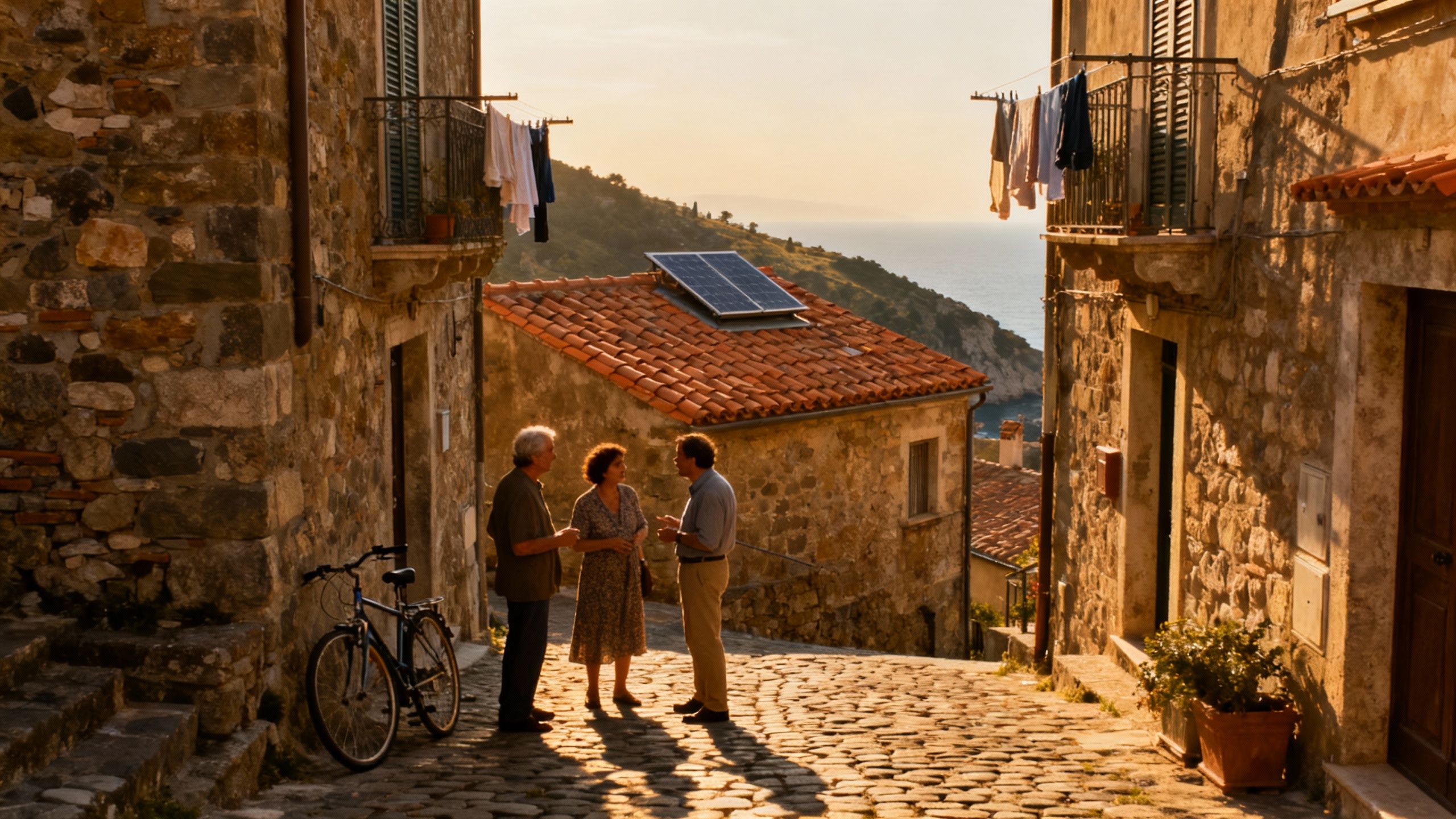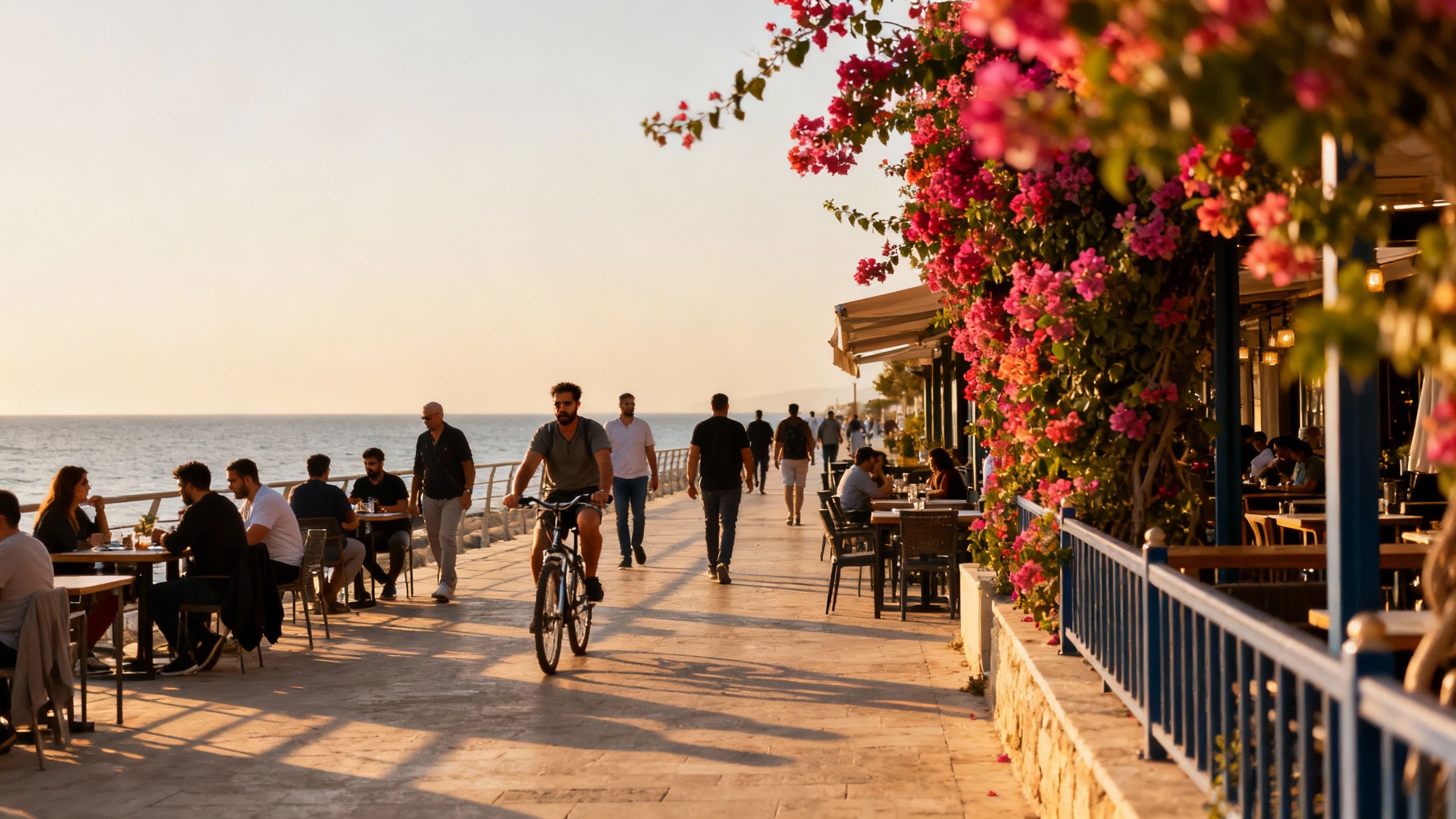Taxes, Seasons & Stewardship: Life and Buying in Italy
Fall in love with Italy’s seasonal rhythms and neighbourhood crafts—then align lifestyle choices with taxes, permits and green upgrades backed by current market data.
Imagine waking to the smell of espresso and baking bread, with olive trees catching morning light outside your window. Italy offers a rhythm of slow mornings, lively piazzas, and seasons that shape how people live—outdoor lunches in spring, grape harvests in autumn, and quieter, introspective winters. For international buyers drawn to green living and traditional craft, that daily rhythm matters as much as square metres: where you place yourself in the landscape determines sun, wind, community and cost. Recent market analysis shows steady price growth and rising foreign interest, making lifestyle choices inseparable from practical decisions about taxes, renovation and residency. https://www.idealista.it/en/news/property-for-sale-in-italy/2025/07/24/253491-italy-s-property-market-outlook-2025-sales-and-prices-on-the-rise
Living the Italy lifestyle

Italy is not a single place but a collection of neighbourhoods and microclimates. In Milan you hear tram bells and feel a metropolitan pulse; in Puglia the coast and olive groves set a slower, sun-warmed pace. Daily life here is sensory: narrow streets smelling of tomato sauce and sea salt, afternoons at neighborhood markets, and evenings that belong to communal dinners. For eco-minded buyers, the most seductive parts are the gardens, terraced vineyards, and stone houses that breathe with the seasons—structures that reward care rather than constant replacement.
Neighborhood spotlights: from Milan to Puglia
Milan’s Navigli and Brera balance historic fabric with cafés, galleries and green courtyards—good for buyers who want culture and connectivity. In Tuscany, towns like Lucca and Siena offer stone piazzas, local craftsmen and a network of agriturismi focused on regenerative agriculture. On the heel of the boot, Puglia’s Ostuni and Lecce showcase coquina-stone houses, coastal breezes and a revival of rural crafts: ceramics, basket-weaving and olive-pressing that connect new residents to land and season.
Food, markets and seasonal living
Picture yourself at a morning mercato buying figs, porcini and fresh ricotta, then lingering over a late espresso while the stalls fold away. Tourism data show foreign visitors shaping seasonal rhythms—busy summers in coastal towns and quieter, restorative winters inland—so choosing a location means understanding how tourist seasons will affect daily life, local services and rental prospects. https://www.istat.it/en/press-release/tourist-flows-fourth-quarter-2024/
- Lifestyle highlights to seek when choosing a place
- Morning market culture: daily or weekly mercados where you’ll source seasonal food and meet neighbours.
- Walkable historic centres or terraces with morning sun—decide whether you want a city apartment or a hilltop villa.
- Local crafts and workshops: pottery in Deruta, olive mills in Puglia, timber restorers in Tuscany—places where restoration preserves skills.
Making the move: practical considerations
Dreams meet paperwork when you sign a preliminary contract. Practical realities—purchase taxes, mortgage availability and regional price differences—shape what you can afford and how quickly you can settle in. Italy’s market shows modest growth and improving mortgage conditions; at the same time, taxes and registration fees depend on whether a property is your prima casa or a second home, and local agencies are essential to interpret cadastral values, energy classifications and permit histories. https://www.tax4expat.com/2025/08/02/italian-property-taxes-for-foreign-buyers-imu-tasi-and-more/ https://www.kyero.com/en/advice/italy/buying-in-italy/france-real-estate-market-outlook-2025-a-comprehensive-guide-for-international-buyers-1
Property types and how they shape daily life
A medieval apartment in central Florence offers immediacy—cafés, museums and bustling streets—while a restored farmhouse outside Siena offers land, gardens and room for solar and olive groves. Consider maintenance: stone buildings need lime-based render repairs; rural properties may require updated electrical and septic systems; coastal homes demand salt-resistant finishes. These factors determine renovation budgets, ecological opportunities (like adding heat pumps or rainwater capture) and how easily you can integrate low-impact living.
Working with local experts who know the lifestyle
A locally rooted agency does more than list properties: they translate local customs, find craftsmen who use traditional materials, advise on seasonal microclimates, and help navigate permits for solar panels or garden renovations. Look for agents with experience in green retrofits and in-region contacts—a good agent becomes your cultural concierge as well as your property guide.
- Steps to align lifestyle with legal reality
- Research microclimate and seasonality—visit in at least two different seasons before bidding.
- Ask for cadastral maps, energy certificates and recent invoices to understand running costs and renovation needs.
- Confirm tax treatment (prima casa vs. second home), and calculate one‑time and ongoing taxes with a notary or tax advisor.
Insider knowledge: what expats wish they'd known
Long-time expats say the surprises are small, sensory and cumulative: local opening hours, summer closures, and community rituals matter more than an extra room. On the fiscal side, incentives like Italy’s flat-tax regimes for new residents exist but are evolving; always check current rules if fiscal residency is part of your plan. These small cultural and legal details determine whether a move feels seamless or wearisome. https://www.reuters.com/world/europe/italy-doubles-flat-tax-rich-who-move-fiscal-residence-country-2024-08-07/
Cultural integration and everyday language
Learning Italian opens doors—from shopkeepers to local councils—yet many expat communities form around a few cafes, language classes and volunteer projects. Join food cooperatives, life‑guarded beach cleanups or olive harvests to meet people and learn repair skills from local artisans. Integration is gradual and rooted in presence: show up at the market, learn neighbours’ names, and accept that bureaucracy often moves at a slower, more human pace.
Long-term planning: stewardship and seasonal rhythms
Think five, ten and twenty years ahead: will you want an income from short-term rentals, or a quiet family base? Consider energy improvements now—insulation, heat pumps, photovoltaic arrays—to lower running costs and increase comfort across seasons. Properties that respect local ecology—retaining terraces, preserving old trees, using local stone—age better and keep cultural value intact, so stewardship is both aesthetic and economic.
- Practical red flags and green checks for viewings
- Red flag: missing energy certificate (APE) or unclear cadastral data.
- Green check: recent investments in insulation, solar, or greywater systems and documented permits.
- Red flag: unresolved condominium debts or frequent short‑term rental conflicts in town centres.
- Key steps after you find the place
- 1. Hire a notary early to review preliminaro and contract clauses and confirm land registry details.
- 2. Arrange a technical survey (geometra or architect) to identify hidden costs and necessary permits for upgrades.
- 3. Discuss residency and tax planning with an advisor if you plan to move permanently or use the flat‑tax scheme.
Italy gives you seasons, markets, skilled craftsmen and a built environment that invites stewardship. If your dream includes morning markets, community dinners and a garden that yields fruit each year, you can find a home that supports that life—so long as you pair emotional vision with practical checks. Start with in‑person visits in different seasons, work with a local agent experienced in green retrofits, and bring a notary and technical surveyor before you sign anything.
If Italy feels like the right life, let the landscape lead and let local experts clear the path. Visit in different seasons, check tax and residency implications, and join community rituals early. A considered approach protects both your wallet and the very rhythms that made you fall in love with this place.
Norwegian market analyst who relocated from Oslo to Provence; guides investors with rigorous portfolio strategy and regional ecological value.


